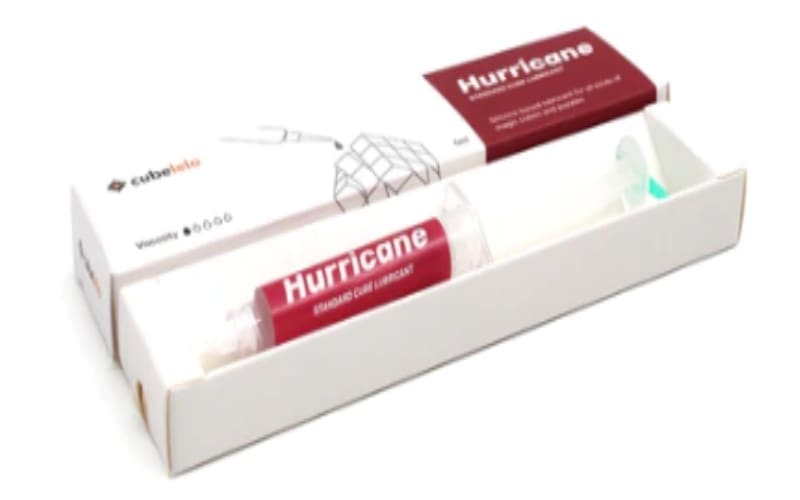
Maximize Your Speed and Precision with Cube Lubricant: Ultimate Rubik’s Cube Performance
When it comes to solving the Rubik’s Cube, speed and precision are paramount. One often overlooked but essential element that can significantly enhance your solving experience is cube lubricant. Cube lubricant is a game-changer when it comes to achieving optimal performance and maximizing your speed.
In this article, we will delve into the world of cube lubricants, explore their benefits, and provide valuable insights on how to use them to elevate your Rubik’s Cube 3×3 solving abilities.
I. Understanding Cube Lubricant: Unleashing the Potential
Cube lubricant, also known as puzzle lubricant, is a specially formulated substance designed to reduce friction and enhance the smoothness of the Rubik’s Cube’s moving parts. It typically consists of silicone-based or synthetic lubricants that offer long-lasting and consistent performance.
Cube lubricant is a crucial element in achieving faster solve times and improved control. By reducing friction between the puzzle’s components, lubricant enables smoother and effortless turns, minimizing lock-ups and enhancing corner-cutting capabilities. The proper application of cube lubricant can significantly enhance your solving experience and unlock your potential for speed and precision.
II. Selecting the Right Cube Lubricant for Your Needs
Silicone-based lubricants are the most commonly used type of cube lubricant. They provide excellent lubrication, durability, and consistent performance. Silicone-based lubricants are available in different viscosities, allowing you to choose the level of lubrication that suits your preferences and solving style.
Synthetic lubricants, such as nano-particles or polymers, offer alternative options for cube lubrication. These lubricants often provide specific benefits, such as enhanced speed, improved stability, or reduced friction on particular surfaces. Synthetic lubricants can offer unique advantages for advanced cubers looking for specialized performance.
III. Applying Cube Lubricant: Techniques for Optimal Performance
Before applying lubricant, it is necessary to disassemble the cube to access its internal mechanisms. Take apart the puzzle carefully, noting the orientation of the pieces to ensure proper reassembly later.
Apply a small amount of lubricant to the core of the Rubik’s Cube. Ensure even distribution of the lubricant, reaching all the moving parts of the core. This step is crucial for reducing friction and allowing smooth rotation.
To maximize performance, lubricate the contact points between the pieces. Apply a small amount of lubricant to areas where the pieces come into contact, such as edges and corners. Spread the lubricant evenly, ensuring it reaches all relevant surfaces.
After applying the lubricant, wipe away any excess using a clean cloth or tissue. Over-lubrication can lead to a sluggish feel, so it’s essential to remove any surplus lubricant. Additionally, allow some time for the lubricant to settle and the cube to undergo a break-in period for optimal performance.
IV. Fine-Tuning for Personalization and Performance
Every cuber has unique preferences and solving styles. Experiment with different amounts and types of lubricants to find the optimal balance that suits your needs. Some cubers prefer a faster and more slippery feel, while others prefer a slightly drier and more controlled sensation. Fine-tuning allows you to tailor the cube’s performance to your liking, optimizing your speed and precision.
Regular maintenance is crucial to keep your cube performing at its best. Over time, the lubricant may wear off or become less effective. Reapply lubricant periodically to ensure optimal performance and extend the lifespan of your cube. The frequency of reapplication will depend on factors such as the type of lubricant, intensity of usage, and personal preference.
V. Lubricant for Different Cubing Styles
For speedcubers who aim for lightning-fast solve times, choosing the right lubricant is crucial. Silicone-based lubricants with lower viscosity are often preferred as they offer a smooth and fast feel, allowing for quick and effortless turns. It’s important to find a balance that provides optimal speed without sacrificing control.

One-handed solving requires precise finger movements and stability. To achieve smooth and controlled turns, a slightly thicker lubricant or a combination of different lubricants can be applied. This helps to reduce the likelihood of slips and increase accuracy, especially during fast one-handed solves.
OHV, or One-Handed Variant, is a challenging twisty puzzle with irregularly shaped pieces. Applying lubricant to the contact points between these pieces can improve the overall stability and flow during solving. Experimenting with different lubricants and amounts will help you find the ideal combination for this unique puzzle.
VI. Overcoming Common Issues with Lubrication
Applying too much lubricant can lead to an overly slippery or sluggish cube. To fix this, wipe away excess lubricant with a clean cloth or tissue until you achieve the desired feel. If necessary, disassemble the cube and clean the pieces with a mild detergent to remove any excess lubricant build-up.
Insufficient lubrication can result in a dry and scratchy feel, hindering smooth turns. If you find your cube to be too dry, reapply a small amount of lubricant to the core and contact points between the pieces. Gradually increase the lubrication until you achieve the desired level of smoothness.
Conclusion
Cube lubricant is a powerful tool that can elevate your Rubik’s Cube-solving abilities to new heights. By reducing friction, enhancing smoothness, and allowing for precise control, cube lubricant maximizes your speed and precision. With the right lubricant and application techniques, you can unlock the ultimate performance of your Rubik’s Cube and enjoy faster, smoother, and more satisfying solutions.
